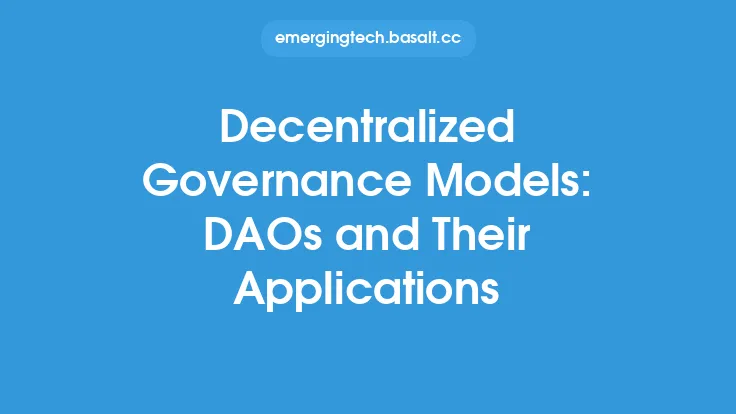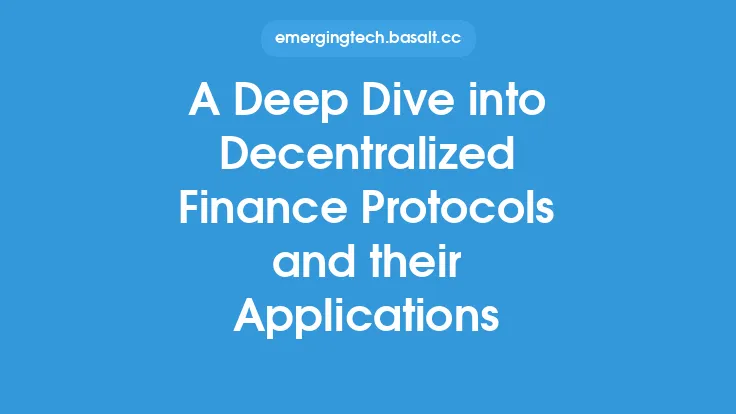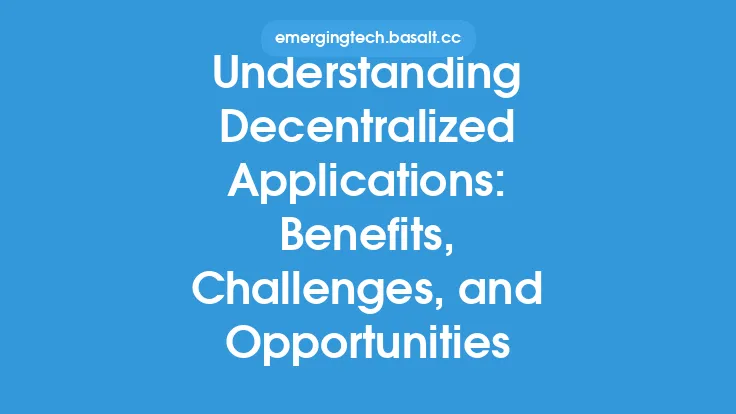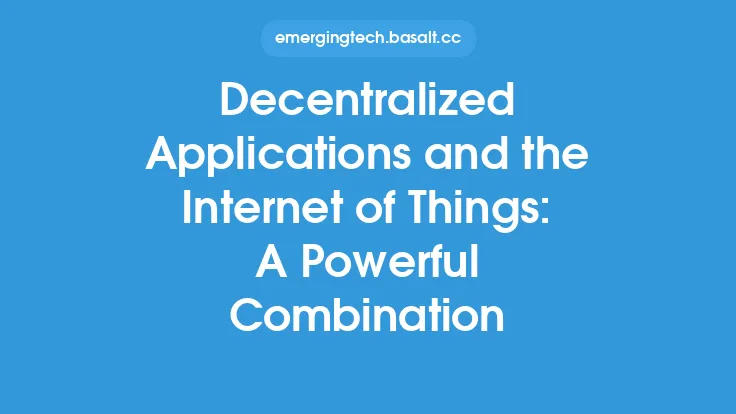The rise of decentralized applications, also known as dApps, has been a significant development in the blockchain space. These applications operate on a decentralized network, allowing users to interact with each other without the need for intermediaries. One of the key benefits of dApps is their impact on data ownership and control. In traditional centralized systems, users typically have to rely on a third-party service provider to store and manage their data. This can lead to concerns around data privacy, security, and ownership. With dApps, users have full control over their data, and it is stored on a decentralized network, making it more secure and resistant to censorship.
Introduction to Decentralized Applications
Decentralized applications are built on blockchain technology, which allows for the creation of a decentralized network. This network is maintained by a network of nodes, rather than a single central authority. dApps can be built on various blockchain platforms, such as Ethereum, Polkadot, and Solana. These platforms provide the necessary tools and infrastructure for developers to build and deploy dApps. The decentralized nature of dApps allows for a more secure and transparent way of interacting with data, as all transactions and data storage are recorded on a public ledger.
Data Ownership and Control
One of the primary benefits of dApps is the control they give users over their data. In traditional centralized systems, users typically have to grant permission to a third-party service provider to store and manage their data. This can lead to concerns around data privacy, as users have limited control over how their data is used and shared. With dApps, users have full control over their data, and it is stored on a decentralized network, making it more secure and resistant to censorship. Users can choose to share their data with others, but they have the final say in how it is used and shared.
Decentralized Data Storage
Decentralized data storage is a critical component of dApps. Rather than relying on a centralized server to store data, dApps use a decentralized network of nodes to store and manage data. This approach provides several benefits, including improved security, increased redundancy, and enhanced censorship resistance. Decentralized data storage solutions, such as InterPlanetary File System (IPFS), allow users to store and share files in a decentralized manner. This approach ensures that data is not controlled by a single entity and is more resistant to censorship and data loss.
Smart Contracts and Data Management
Smart contracts are self-executing contracts with the terms of the agreement written directly into lines of code. They are a critical component of dApps, as they allow for the automation of data management and transfer. Smart contracts can be used to manage data access, storage, and sharing, ensuring that data is handled in a secure and transparent manner. They can also be used to create decentralized data marketplaces, where users can buy and sell data in a secure and trusted environment.
Benefits of Decentralized Applications
The benefits of dApps are numerous, and they have the potential to revolutionize the way we interact with data. Some of the key benefits include:
- Improved security: dApps operate on a decentralized network, making them more resistant to hacking and data breaches.
- Increased transparency: All transactions and data storage are recorded on a public ledger, ensuring that data management is transparent and tamper-proof.
- Enhanced censorship resistance: dApps are more resistant to censorship, as they operate on a decentralized network and are not controlled by a single entity.
- Improved data ownership: Users have full control over their data, and it is stored on a decentralized network, making it more secure and resistant to censorship.
Challenges and Limitations
While dApps have the potential to revolutionize the way we interact with data, there are several challenges and limitations that need to be addressed. Some of the key challenges include:
- Scalability: dApps are still in the early stages of development, and scalability is a significant challenge. As the number of users increases, the network can become congested, leading to slower transaction times and higher fees.
- User experience: dApps can be complex and difficult to use, which can be a barrier to adoption. Improving the user experience is critical to increasing adoption and mainstream acceptance.
- Regulation: The regulatory environment for dApps is still unclear, and there is a need for greater clarity and guidance. This can make it difficult for developers to build and deploy dApps, as they may be subject to changing regulatory requirements.
Conclusion
Decentralized applications have the potential to revolutionize the way we interact with data. By providing a decentralized and secure way of storing and managing data, dApps give users full control over their data and ensure that it is stored on a decentralized network. While there are several challenges and limitations that need to be addressed, the benefits of dApps make them an exciting and promising development in the blockchain space. As the technology continues to evolve, we can expect to see increased adoption and mainstream acceptance of dApps, leading to a more secure, transparent, and decentralized digital world.





